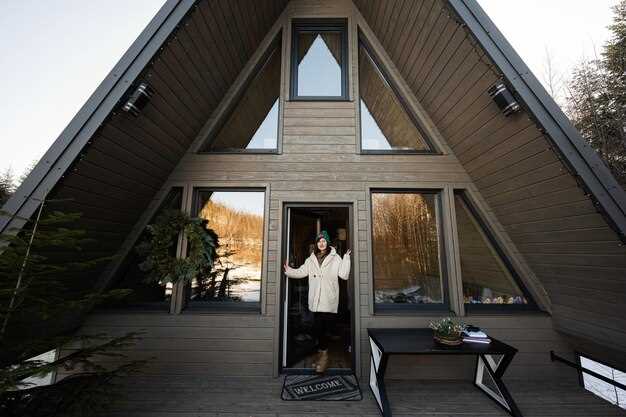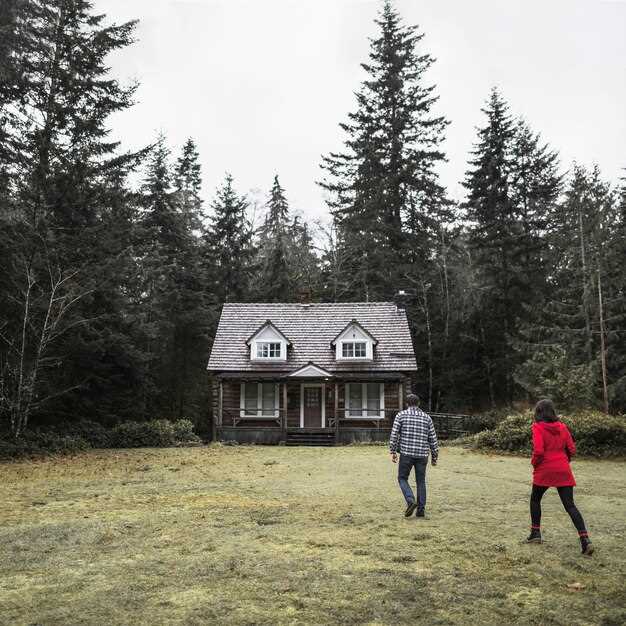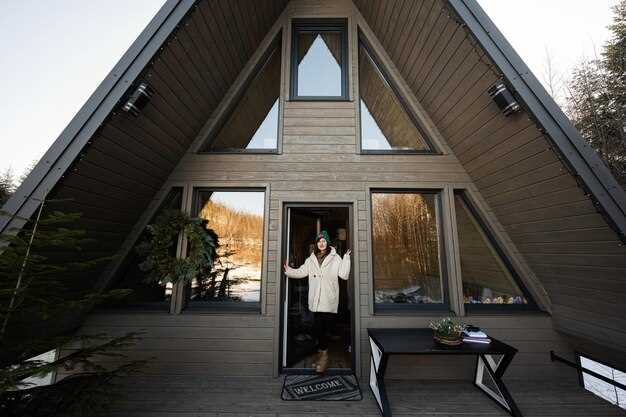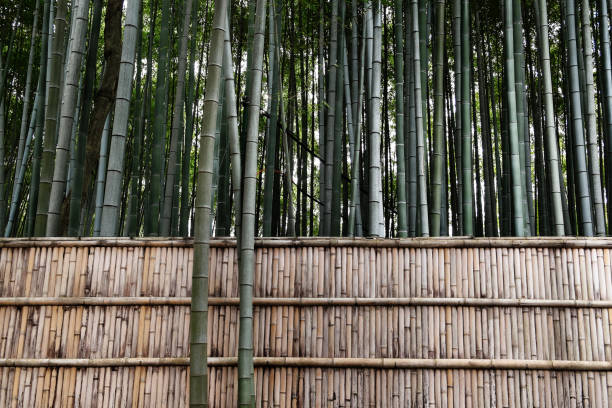Choose the ultimate escape by selecting a tiny cabin for a serene and intimate retreat. These compact dwellings offer an experience that connects you directly with nature, prioritizing simplicity and tranquility. Their small size often means a reduced environmental footprint, allowing you to immerse yourself in the surrounding landscape with a sense of eco-consciousness. Tiny cabins typically offer a cozy setting with essential amenities, making them perfect for those who value minimalism and want a closer bond with the outdoors.
For those seeking unparalleled comfort without compromising sustainability, luxury eco lodges stand as an exceptional option. These accommodations focus on providing guests with the highest levels of comfort and service, while integrating sustainable practices such as solar power, rainwater harvesting, and locally-sourced materials. Opting for a luxury eco lodge means indulging in the amenities and sophisticated design akin to those of high-end hotels, but with a commitment to environmentally friendly practices.
Deciding between a tiny cabin and a luxury eco lodge primarily depends on your personal retreat vision. If you’re inclined towards minimalistic living and ample time in nature, the tiny cabin might be your idyllic setting. Alternatively, if you yearn for eco-friendly indulgence without sacrificing modern comforts, a luxury eco lodge would best suit your desires. Each option offers distinct benefits, tailored to diverse preferences for a truly memorable retreat experience.
Tiny Cabin Retreat: Design and Practical Considerations

Prioritize maximizing natural light in your tiny cabin by installing large windows or skylights. Leverage multifunctional furniture, like sofa beds and stackable chairs, to make the most of limited space. Invest in quality insulation and energy-efficient appliances to lower energy consumption and maintain comfort throughout the year.
Think vertically when integrating storage solutions. Wall-mounted shelves and lofted beds provide ample space without cluttering the floor. Consider sustainable building materials, such as reclaimed wood or locally sourced items, to enhance eco-friendliness and unique aesthetics.
Position the cabin to harmonize with the surrounding environment, offering guests privacy and scenic views while minimizing the impact on local wildlife. Facilitate easy access to amenities with strategically placed pathways and outdoor features, like fire pits and seating areas, encouraging relaxation and social interaction.
Plan for off-grid capabilities with solar panels and composting toilets, reducing dependency on external resources. Due to limited space, carefully curate decor and personal items, embracing a minimalist approach to encourage a tranquil atmosphere. Address fundamental needs without overcomplicating your design strategy, allowing your tiny cabin to offer an intimate and memorable retreat.
Optimizing Space Without Sacrificing Comfort
Prioritize multi-functional furniture to maximize utility in compact spaces. Invest in a fold-out desk or a convertible sofa bed that enhances both functionality and comfort. Choose items that adapt to various needs, such as a dining table that doubles as a work desk.
- Smart Storage Solutions: Integrate storage under beds and seating areas. Use vertical shelving to keep essentials organized while freeing up floor space.
- Natural Light and Mirrors: Install large windows and strategically place mirrors to make small areas feel more expansive and welcoming. The reflection of natural light opens up the room and adds warmth.
- Efficient Layout Design: Arrange furniture to allow for smooth traffic flow and accessibility. Ensure that pathways remain clear and focus on open floor plans to create an airy atmosphere.
- Compact Appliances: Opt for appliances that are tailored for smaller spaces yet retain full functionality. Look for energy-efficient models that align with an eco-friendly ethos, reducing both space use and environmental impact.
- Color Strategy: Use light, neutral colors for walls and furnishings to enhance the perception of space. Incorporate accent colors sparingly to add personality without overwhelming the senses.
Incorporating these strategies creates a cozy yet spacious environment, transforming a tiny cabin or luxury lodge into a haven of comfort and efficiency.
Material Selection: Balancing Cost and Sustainability
Opt for locally-sourced timber, which not only reduces transportation emissions but also supports local economies. Consider reclaimed wood for a rustic charm that doesn’t compromise the environment. For both cabins and lodges, use sheep wool or cellulose for insulation, offering both thermal efficiency and biodegradability. For roofing, opt for recycled metal, which combines durability with the ability to reflect heat, reducing cooling costs.
Incorporate bamboo in interiors for a cost-effective and rapidly renewable solution, maintaining an elegant aesthetic. Choose non-toxic paints and finishes made from natural ingredients, ensuring indoor air quality and environmental health. For flooring, cork offers a resilient and renewable option that adds a unique texture, while recycled tile can bring a sleek, modern touch to wet areas.
Invest in solar panels and rainwater harvesting systems to enhance self-sustainability, lowering operational costs over time. Balance the budget through government incentives available for eco-friendly constructions. These thoughtful choices allow for creating a retreat space that does not sacrifice quality or sustainability.
Off-Grid Technologies to Enhance Independence
Invest in solar panels with integrated battery storage systems to ensure a reliable power supply. Choose high-efficiency models tailored to your region’s sunlight availability. Pairing photovoltaic panels with lithium-ion batteries maximizes energy retention and supply during cloudy days or at night.
Integrate a rainwater harvesting system to collect and store water. Opt for a system with filtration capabilities to ensure clean water access. The combination of a well-designed collection surface and UV filtration offers consistent water quality.
Consider composting toilets to reduce water usage. These systems not only save water but also convert waste into usable compost for your garden. Select a model with an integrated ventilation fan to minimize odors.
Install a small wind turbine if consistent wind conditions are present at your location. Determine the average wind speed and ensure the turbine is positioned away from obstructions for optimal performance. Hybrid systems that combine wind and solar power can further bolster energy independence.
Choose passive solar design elements for natural heating and cooling. Large south-facing windows and thermal mass materials like concrete or stone can stabilize indoor temperatures. Insulated roofs and walls will further enhance energy efficiency and comfort.
Regulatory and Zoning Challenges for Tiny Cabins
Identify specific zoning laws applicable to the location before settling on a site for tiny cabins. Many regions have minimum size requirements for residential buildings, which tiny cabins may not meet, potentially classifying them as non-compliant. To navigate these hurdles, engage with local planning offices early in the process to understand the parameters and possibilities for exemptions or reclassification.
Consider obtaining a “recreational use” designation if local laws present obstacles. This classification may offer more flexibility, though it often comes with restrictions on permanent residency. Ensure careful documentation and a clear understanding of what is permissible under this category, as it varies greatly between jurisdictions.
Use modular or off-grid designs to satisfy regulatory concerns related to utilities and infrastructure, such as sewage and electricity. Alternative solutions like composting toilets and solar energy can align with sustainability goals while bypassing stringent utility integration requirements. Such innovations often receive more favorable receptions in regions with progressive environmental policies.
Networking with other tiny home or cabin communities can provide insights and share experiences dealing with local regulations. Joining forums or associations may offer resources, contacts, and collective bargaining power that eases the regulatory approval process. Collaborate with architects or builders experienced in smaller structures to address technical compliance issues effectively.
Ultimately, proactive research and engagement with local stakeholders, along with innovative designs consistent with local regulations, will pave the way to securing approval more smoothly and efficiently for your tiny cabin retreat vision.
Target Market: Who Will Choose Tiny Cabins?
Young professionals seeking a digital detox find tiny cabins appealing. These individuals often crave a break from their urban lifestyle and are drawn to minimalist, nature-focused getaways. Tiny cabins offer the perfect balance of basic comfort and raw natural beauty, encouraging guests to disconnect from technology and reconnect with themselves.
Eco-conscious travelers also gravitate towards tiny cabins. With a smaller carbon footprint and emphasis on sustainable living, these retreats attract those who prioritize environmental responsibility. Tiny cabins often use renewable energy sources, composting toilets, and recyclable materials, aligning perfectly with the values of this demographic.
Adventure enthusiasts and outdoor lovers often prefer tiny cabins due to their location and accessibility to recreational activities. These individuals seek experiences like hiking, kayaking, or simply exploring the wilderness right outside their doorstep. The simplistic and adaptable design of these cabins allows for easy access to remote and scenic areas.
Budget-conscious travelers appreciate the affordability of tiny cabin retreats. Unlike luxury lodgings, tiny cabins provide a cost-effective option without sacrificing a unique experience. This affordability appeals to backpackers, students, and families looking for a memorable yet economical vacation.
| Demographic | Motivation |
|---|---|
| Young Professionals | Digital detox from urban life |
| Eco-conscious Travelers | Preference for sustainable living |
| Adventure Enthusiasts | Proximity to outdoor activities |
| Budget-conscious Travelers | Affordable vacation option |
In conclusion, tiny cabins cater to a varied audience, each group seeking a unique experience. By understanding these target markets, retreat owners can better tailor their offerings to meet the specific desires and priorities of their guests, ensuring a fulfilling stay for all.
Luxury Eco Lodge Design: A Comprehensive Approach

Prioritize integrating sustainable materials that complement natural surroundings. Choose locally sourced timber, recycled steel, and eco-friendly insulation to ensure minimal environmental impact while maintaining high quality and durability. Install large windows to maximize natural light, reducing the need for artificial lighting and creating seamless transitions between indoor and outdoor spaces.
Advanced energy solutions, such as solar panels and geothermal heating systems, are key for reducing carbon footprints. Harness renewable energy sources to power guest accommodations and communal areas without compromising comfort. Implement rainwater harvesting systems and greywater recycling for efficient water management, preserving local resources.
| Element | Eco-Friendly Choice |
|---|---|
| Materials | Locally sourced timber, recycled steel |
| Energy | Solar panels, geothermal systems |
| Water Management | Rainwater harvesting, greywater recycling |
| Lighting | LED lighting, large windows |
Design communal spaces that encourage social interaction and relaxation. Consider open-air lounges, nature trails, and accessible terraces with panoramic views. Use indigenous plants for landscaping to promote local biodiversity and minimize maintenance.
Ensure that digital connectivity enhances, rather than detracts from, the natural experience. Offer Wi-Fi in designated areas to help guests unplug while still providing necessary access. Equip rooms with smart technology to tailor guest experiences and conserve energy.
Finally, incorporate educational elements to enrich guest experiences. Offer workshops on sustainability practices and guided tours to emphasize the importance of conservation efforts. By creating a meaningful connection between guests and the environment, a Luxury Eco Lodge becomes more than just a place to stay–it becomes a gateway to a more sustainable lifestyle.
Architectural Innovations for Guest Experience
Utilize biophilic design principles to create a seamless connection between the indoors and outdoors, enhancing the guest experience through natural elements. Whether designing tiny cabins or luxury lodges, incorporate large windows and open spaces for expansive views and natural light.
- Smart Homes Integration: Implement smart home technologies, such as automated lighting, temperature control, and voice-activated assistants, to cater to tech-savvy visitors seeking convenience.
- Modular Architecture: Design flexible, modular spaces that can adapt to various guest needs and group sizes, providing customizable layouts for personal comfort and diverse activities.
- Sustainable Materials: Prioritize sustainable building materials, such as reclaimed wood and recycled metals, to appeal to eco-conscious travelers, while adding an authentic, rustic charm.
- Indoor-Outdoor Living: Develop outdoor living rooms and kitchens to extend the indoor space, allowing guests to enjoy the surroundings without sacrificing comfort and amenities.
- Innovative Water Features: Introduce serene water features like reflecting pools or natural swimming ponds that serve both aesthetic and cooling purposes, enhancing relaxation.
By focusing on these architectural innovations, retreat destinations can offer a unique and memorable experience tailored to the preferences of modern guests, ensuring satisfaction and encouraging repeat visits.
Integration of Renewable Energy Sources
Choose solar panels to significantly reduce the carbon footprint of your retreat, whether it’s a tiny cabin or a luxury eco lodge. They are effective in generating electricity without emissions, and modern designs can be seamlessly integrated into any architectural style. For smaller spaces like tiny cabins, compact and foldable solar panels maximize efficiency while saving space.
Wind turbines offer a reliable alternative if your location benefits from consistent winds. Consider vertical-axis designs for lodges with limited room or visual restrictions, as they require less space and operate quietly. This option complements other renewable systems, ensuring energy stability even during overcast days.
Hydropower provides a sustainable solution if your retreat is near a water source. Micro-hydrogenerators can be installed without extensive infrastructure and deliver continuous energy, particularly beneficial if your retreat is located in remote areas where grid access is limited.
Integrating geothermal systems enhances heating and cooling efficiency by leveraging the earth’s consistent subterranean temperature. This ensures comfortable indoor climates while reducing reliance on conventional HVAC systems. Although initially demanding a higher investment, they promise long-term savings especially suitable for larger eco lodges.
Combining these sources creates a robust hybrid system. For example, pairing solar and wind energy provides coverage throughout varying weather conditions, enhancing overall reliability. Implement real-time monitoring tools to track energy generation and consumption, allowing you to optimize resource use and identify areas for improvement.
Select renewable energy solutions tailored to your specific retreat needs to achieve a truly sustainable program that aligns with the vision of providing eco-friendly hospitality.
Prioritizing Biodiversity in Landscaping and Site Selection
Select locations with a diversity of native species to support ecological balance. Consider the natural habitat and existing ecosystems, and actively work to preserve them. Make use of native plants in landscaping, which are adapted to local soil, water, and climate conditions, reducing the need for irrigation and fertilizers. Plant a variety of species to create a robust environment that supports wildlife such as birds, bees, and butterflies.
- Soil Health: Regularly test soil to better understand nutrient needs and ensure the health of native plants.
- Water Management: Implement rainwater harvesting systems and use permeable materials for paths and roads to reduce runoff.
- Construction Practices: Choose sustainable materials and methods to minimize disturbance to the environment.
- Natural Buffers: Maintain natural waterways and buffer zones to protect habitats from potential pollution.
In site selection, assess the proximity to natural reserves or protected areas. Avoid disruptions to animal migration paths and plant growth cycles. Identify and preserve essential wildlife corridors that enable movement and dispersion of species. Such measures not only protect the environment but also enhance the authentic experience for visitors, offering glimpses of thriving local fauna and flora.
- Research: Gather data on local biodiversity and potential environmental impacts before making architectural choices.
- Partnerships: Collaborate with local conservation organizations to gain insights and develop eco-friendly strategies.
- Monitoring: Establish a monitoring system to track biodiversity changes and adapt practices as needed.
Establish a balanced cohabitation with nature that honors the natural rhythms and needs of the environment. By focusing on biodiversity, both tiny cabins and luxury eco lodges can offer a sustainable retreat that respects and celebrates the natural world.
Q&A:
What are the main environmental benefits of both tiny cabins and luxury eco lodges?
The primary environmental benefits of both tiny cabins and luxury eco lodges include minimized land impact and energy efficiency. Tiny cabins often use less space and resources, making them an environmentally friendly option for retreats. They can also be built with sustainable materials and designed to use minimal energy. On the other hand, luxury eco lodges usually incorporate advanced eco-friendly technologies, such as solar panels, water recycling systems, and local materials, contributing to reduced environmental footprints while still providing high comfort levels.
How do tiny cabins compare to luxury eco lodges in terms of cost for a retreat getaway?
The cost difference between tiny cabins and luxury eco lodges can be significant. Tiny cabins generally offer a more budget-friendly option for individuals or small groups looking for a simple and serene escape. They are usually less expensive to build and maintain, translating to lower rental costs. Conversely, luxury eco lodges can be pricey due to their upscale amenities, high-quality services, and advanced sustainable technologies. While both options offer unique experiences, your budget can be a deciding factor.
Can tiny cabins provide the same level of comfort and amenities as luxury eco lodges?
Tiny cabins focus on simplicity and often provide basic amenities, which may include a small kitchenette, a bathroom, and a cozy sleeping area, making them ideal for those seeking a minimalist retreat. While they can be comfortable, they usually lack the luxurious touches present in eco lodges. Luxury eco lodges offer a wide range of amenities such as gourmet dining, spa services, and guided tours, all within sustainably designed settings. If you prioritize comfort and indulgence, eco lodges might be more suitable.
How does the experience of staying in a tiny cabin differ from that in a luxury eco lodge?
Staying in a tiny cabin often means embracing a simpler and more intimate connection with nature. The experience emphasizes the use of available resources and encourages a slow-paced lifestyle. In contrast, a luxury eco lodge offers a combination of nature and opulence, providing high-end services and facilities while keeping sustainability at the forefront. Eco lodges often facilitate interactions with the local environment and culture through curated experiences, making them a more immersive stay.




